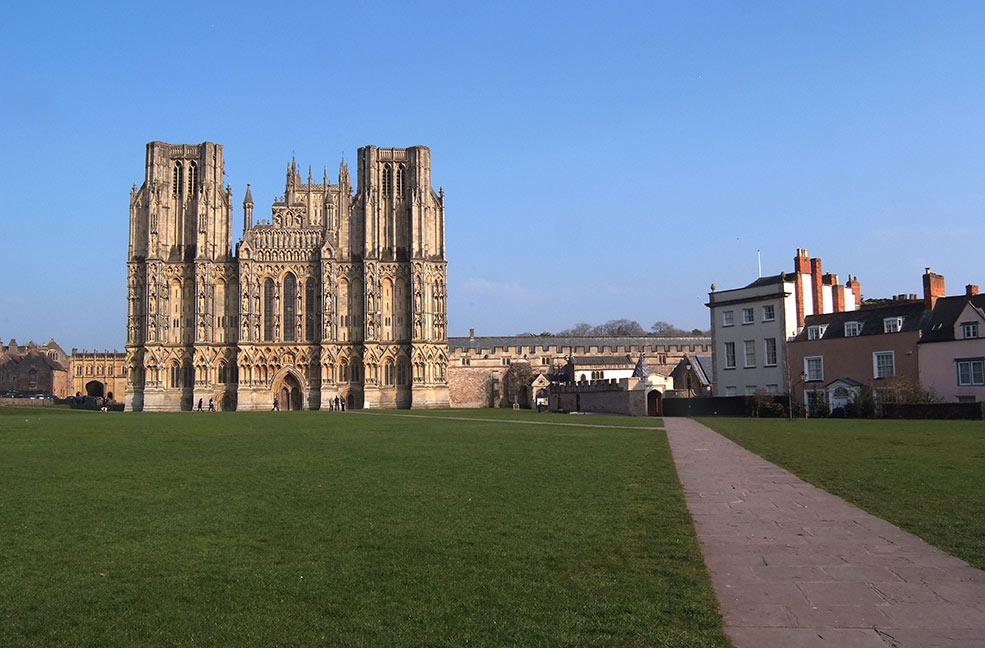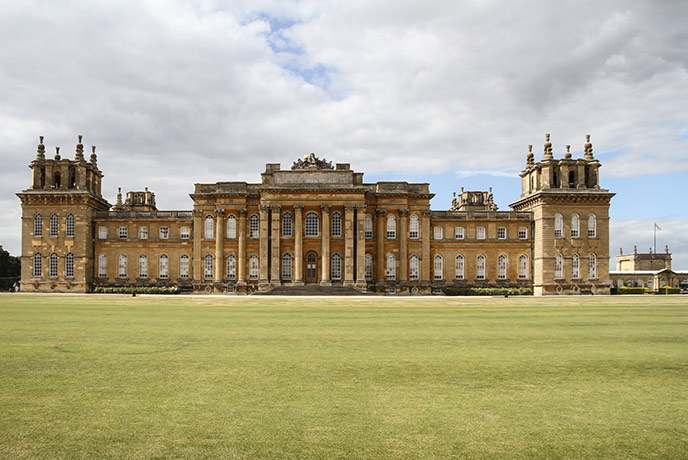Nestled in the heart of the west country, the quietly stunning county of Somerset is ready to wrap you in an oh-so-tranquil blanket of rolling rural scenes and chocolate box villages. From its wildly beautiful landscapes and dreamy sandstone cities to its stunning stately homes, castles, and unique natural phenomena, this incredible county has so much to offer - all punctuated with a cosy local pub, of course!
So whether you want to stretch your legs, buff up on your history, undertake a spot of retail therapy or wander along paths of blooming beautiful gardens, you’ll find Somerset delivers on all levels.
Here’s our top choices of the best places to visit in Somerset to help you make the most of your holiday.
Bath

No visit to East Somerset would be complete without a trip to the beautiful city of Bath. Conjuring dreamy Georgian architecture, the romance of Jane Austen, and the steamy waters of the Roman baths, this incredible World Heritage city has so much to see and do, you’ll definitely need a full day to explore it. Start your day with a wander along the honeyed streets, where the caramel-coloured buildings create an Insta-worthy scene around every corner, especially the world-famous Royal Crescent and picturesque Pulteney Bridge, which bring a touch of Bridgerton to your day.
Have a pit stop at one of the many independent coffee shops before heading to the Roman Baths and museum, where once upon a time the ancient goddess Sulis Minerva was worshipped and weary travellers bathed in the natural thermal springs. Afterwards, head to nearby Sally Lunn’s Historic Eating House and Museum to try the original Sally Lunn Bun with a lip-smacking cup of tea. Next, take a peek into the peaceful Abbey, before indulging in a little retail therapy by perusing Bath’s huge range of quality shops and markets.
For a truly unique experience, pack your swimming costume and book yourself into the incredible Thermae Bath Spa around sunset, when you can head to the rooftop pool and enjoy spectacular views over the city – just wow! If you have any spare time, a visit to the Jane Austen Museum is fascinating, while a cruise along the River Avon offers stunning city and countryside vistas.
Wookey Hole

This magical spot in the heart of Somerset near Wells is an eyebrow-raising collection of stunning caves that have been around for many millions of years. A top family-friendly attraction, little ones will love Wookey Hole’s eight hauntingly beautiful caverns brought to life with legends and adventures, each with its own story. You can also peek into the cheese tunnels, which are home to huge truckles of Wookey Hole cheese.
Once home to giant hyenas, bears, and neanderthals, today there’s just one resident – the Wookey Hole Witch! Other things to see and do include a museum, adventure golf, soft play areas and vintage penny arcades, while the famous Wookey Hole Circus School performs here at weekends and during the school holidays. Afterwards, take yourself off to the nearby Wookey Hole Inn for a bite to eat.
Dunster Castle
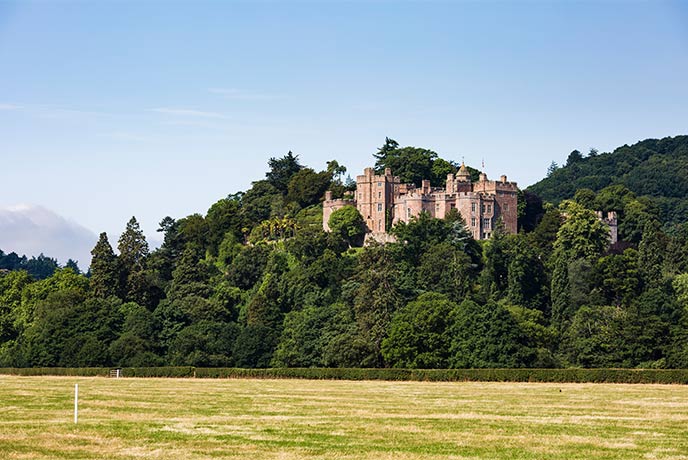
Picturesquely set on a wooded hill with magnificent views across the beautiful medieval village of Dunster and Exmoor National Park, Dunster Castle dates from the Norman times and is a pleasing mish-mash of medieval castle, Jacobean mansion, and Victorian family home that offers a fascinating glimpse of history through the ages. Today, it’s looked after by the National Trust and is well worth a visit to feast your eyes on its collection of antiques and artefacts, most famous being the leather wall hangings depicting the love story of Antony and Cleopatra - the only hangings made of leather found in the whole of Britain.
Not only one of the most celebrated castles in Somerset, Dunster holds many fascinating corners behind its walls, including the terraced gardens that are simply beautiful and well worth exploring for its Victorian watermill, which still runs today (you can also buy the flour they produce), the grand stable that once housed horses bred for battle, the innovative underground Victorian reservoir, and the impressive views from the very top – you can even see the sea!
The castle is great for families too, as little ones can run riot in the natural play area, and there’s a tearoom, pop-up café, second-hand bookshop and a shop to peruse too. Afterwards, make sure you leave time to explore the village itself with its scattering of shops, places to eat and a variety of listed buildings (there’s over 200 of them!), such as the Old Yarn Market in the high street.
Cheddar Gorge
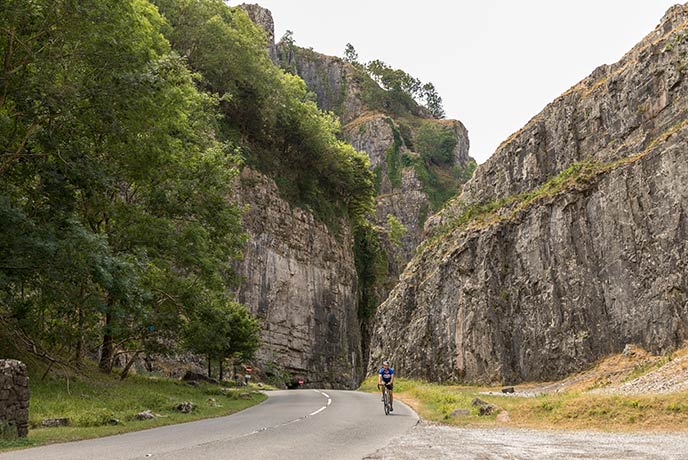
One of Britain’s most awe-inspiring natural landmarks, Cheddar Gorge is also a National Landscape (formerly known as an Area of Outstanding Natural Beauty) as well as a Site of Special Scientific Interest (SSSI) – something that’s easily understood gazing at the impressive cliffs towering above and delving into its deep caves, dripping with immense stalactites.
Gawp in wonder at Gough’s Cave, a 500,000 year old cathedral-like cavern that’s considered to be one of the finest in England, climb the 274 steps up Jacob’s Ladder to the Lookout Tower for an eagle’s view over the Mendips and Somerset Levels, and delve into Cheddar’s history and its occupants in the Museum of Prehistory – such as the world-famous Cheddar Man, the oldest complete human skeleton to be found in Britain.
Afterwards, blow away the cobwebs with a walk along The Strawberry Line (so called after the disused railway line it follows that used to carry strawberries across the region), a traffic-free footpath that runs from Shepton Mallet to Clevedon, passing through Cheddar along the way.
Glastonbury Tor

Glastonbury Tor is an extraordinarily prominent hill that rises out of the Somerset Levels, with majestic views over Somerset, Dorset, Wales, Wiltshire and of course the Isle of Avalon itself, Glastonbury. At its base there are also two sacred springs – one white (due to calcium deposits) and the other red (due to copper). The Tor is topped with a tower - all that remains of a 14th-century church – while there’s also a seven-circled labyrinth that snakes its way to the top, offering just a hint of its colourful past. Years ago, the Levels would have been marshy and tidal, making the Tor appear like an island.
It’s been a Neolithic and Iron Age settlement, a Roman fort (perfect for looking over the surrounding area), the site of an 11th century church, which was destroyed by an earthquake (locals blamed the faerie folk), before finally another was built in the 14th century. Destroyed during the Dissolution of the Monasteries, it was also the setting for the grisly execution of the last Abbot of Glastonbury.
As well as a rich history, the Tor is also swathed in folklore. For the ancient Celts, the Tor was the home of Gwyn ap Nudd, the lord of the underworld and bringer of death, who would burst forth from the hill with his pack of wolves and collect souls. Later on, it was known as the home of the Faerie King, and locals would be wary climbing the hill as the faeries would play tricks on them. In the Arthurian legends, it was believed the Tor belonged to the enchantress Morgana le Fay and was where Excalibur was forged. When Christianity arrived, it was believed the Holy Grail was buried at its base by Joseph of Arimathea near the red spring, earning it the name of the Chalice Well.
The Tor lies to the east of Glastonbury and takes around 15 minutes to walk to the top from the town. It’s a fairly steep climb but well worth it for the incredible views! The National Trust offers a shuttle bus to the Tor’s base should you need it.
Quantock Hills
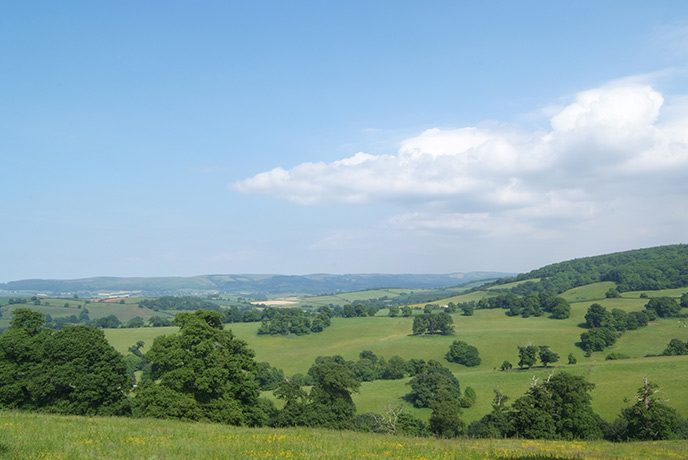
England’s first AONB (now called National Landscape), the Quantock Hills covers a huge area of Somerset, from Taunton Deane all the way to the Bristol Channel coast. With a landscape that runs from wild heathland and tranquil farmland down through quaint villages to the rocky coastline, the Quantocks boast a diverse area that’s calling to be explored.
Home to a rich variety of flora and fauna such as wild red deer, heather, and whortleberries (a kind of blueberry), it’s not surprising that the area has inspired creative types such as the Romantic poets William Wordsworth and Samuel Coleridge (who actually lived in a cottage in Nether Stowey, today managed by the National Trust).
Highlights of the Quantocks include Cothelstone Hill, which boasts some of the best views across Somerset, Kilve Beach famous for its rock pools and fossils, the 600-hectare Ramscombe Wood filled with ancient oaks and conifers, Hawksridge Reservoir and Hestercombe, which is home to 20 hectares of formal gardens to explore. Alternatively, just don your walking boots and take to the miles and miles of footpaths that snake their way over the landscape, the most famous of which is the Coleridge Way, which runs for 51 glorious miles.
Wells
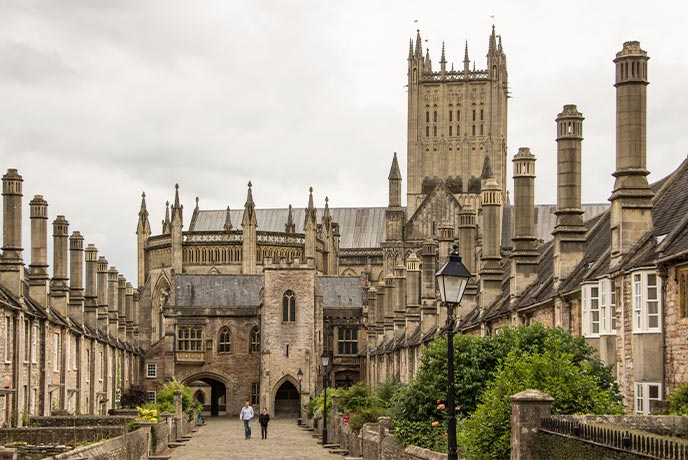
The smallest city in Britain, Wells is a destination that lives up to the phrase ‘small but perfectly formed’. Dominated by its formidable 12th century cathedral, there’s plenty to see here, especially for history lovers, such as the astonishing Bishop’s Palace, home to the bishops of Bath and Wells for over 800 years. Comprising of a medieval palace, private chapel, ruined great hall and 14 acres of gardens to explore, it’s a beautiful spot in the heart of the city that’s a delight to wander around.
Another historical landmark is Vicar’s Close, the oldest continuously occupied street in Europe that dates back 650 years, while Market Place marks the heart of the city and is home to the weekly markets that take place on a Wednesday and Saturday. Not there on one of those days? No matter – pop into one of the cafés or restaurants or on a sunny day take a seat outside and watch the world go by while you have a bite to eat.
Exmoor National Park
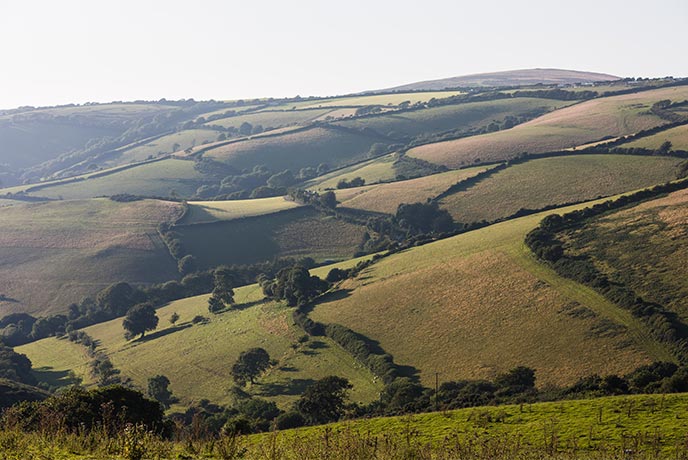
Straddling both Somerset and Devon, this incredible National Park was established in 1954 and designated the first Dark Sky Reserve in Europe. Exmoor feels like a living, working landscape, and if you’re staying in one of our cottages on or near Exmoor, give yourself a few days to explore this expansive region as there’s so much to see and do.
If you like to potter around villages and towns, make for the extremely quaint hamlet of Selworthy with its collection of chocolate-box-pretty thatched cottages. Part of the huge Holnicote Estate managed by the National Trust, you can find several paths from here that lead up to Selworthy Beacon, where you’ll get impressive views over Exmoor and across the sea towards Wales.
In the heart of Exmoor lies the unspoilt village of Withypool, home to the Tarr Steps, a picturesque medieval clapper bridge that’s fun to walk over and dip toes in the water. Dulverton, considered to be the gateway into Exmoor, is well worth a wander for its boutique shops and riverside location, while Dunster is famed for its medieval buildings and impressive castle. Dunkery Beacon, the highest point in Exmoor, is a gorgeous climb for its beautiful vistas and a glimpse of the wild ponies (and occasional red deer), while Horner Wood is one of the largest and most beautiful ancient oak woodlands in the whole of Britain and the perfect setting for an autumnal walk.
Montacute House and Gardens

It’s hard to believe that this incredible Elizabethan manor near Yeovil was offered for scrap in 1931 before being rescued by the National Trust! Immense in scale, Montacute House was built using Ham Hill quarried stone and completed in 1601. Built for Sir Edward Phelips, a wealthy lawyer who was involved in the prosecution of the notorious Guy Fawkes, this impressive manor house is home to rare tapestries (one of which, the Tournai Tapestry, is the oldest to be owned by the National Trust), exquisite furniture, and intricate plasterwork.
It’s also where you can find the Long Gallery, the longest example to be found in England and a place where the wealthy could enjoy exercise on a rainy day while gazing over the surrounding landscape. Montacute has some of the last remaining Elizabethan compartmentalised gardens in the world, a must-see when visiting. From its vast lawns, ‘wibbly wobbly’ ancient yew hedges, and raised walkways to the grand orangery, sweeping driveway, and beautiful flower beds and shrub borders designed in the 1950’s by Vita Sackville-West, there’s plenty to see and do. The wider estate is well worth exploring if you have the time, with woodland, grand walkways, tower-topped hills and ponds to discover.
Mendip Hills
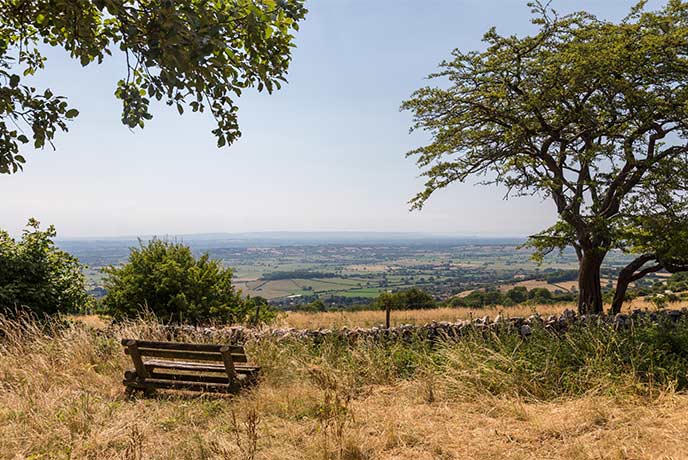
The Mendip Hills, a designated National Landscape, is one of 46 areas in the country to be given this notable title and offers a gorgeous natural habitat of limestone ridges, grassy plateaus, lakes and hidden valleys, running from the Somerset Levels to Chew Valley just south of Bristol.
The Mendips offer the perfect setting to spend some quality time outside in the fresh air, with plenty of paths and trails for strolls, rambles, and romps across the countryside. Highlights include The Mendip Way, a 50-mile waymarked trail running from Weston-Super-Mare on the coast all the way to Frome, passing the beautiful towns of Shepton Mallet, Cheddar and Wells. Why not choose a section to explore and pack yourself a picnic to take with you? Head to Blackdown, the highest point in the Mendips, for incredible views, while Blagdon Reservoir is great for a gentle stroll.
For cyclists, the pretty Strawberry Line is a 10-mile long route along disused railway lines from Yatton to Cheddar and a great way to explore the countryside. For something a little more sedate, head to the small market town of Axbridge, which dates back to the Saxon times. Originally a fortified settlement during the time of King Alfred to defend against the invading Vikings, take a stroll around to gaze at the stunning medieval buildings around the main square, before popping into King John’s Hunting Lodge, a fascinating museum of local history managed by the National Trust. If you have adventurous children with you, pay a visit to the Mendip Activity Centre, a 250-acre haven for rock-climbing, skiing, snowboarding, archery, bushcraft skills, canoeing, caving, orienteering and so much more.
Clevedon Pier and Marine Lake
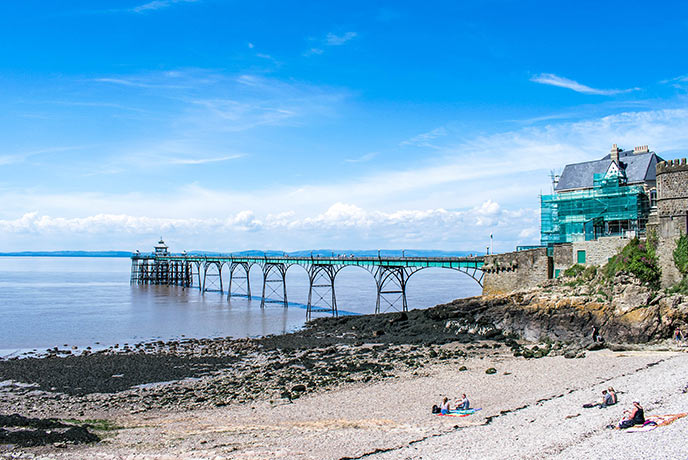
Clevedon Pier, considered to be ‘the most beautiful pier in England’ by Sir John Betjeman, is a must-visit when staying near Somerset’s enchanting coastline. The epitome of Victorian English seaside charm, the pretty Grade I* pier was completed in 1869 and used by paddle steamers to transport passengers along the Severn Estuary between Devon and Wales. Today you can enjoy an amble along the pier (everyday except Mondays or Tuesdays) and there’s a lovely little gift shop to take a peek in, too.
If you’re hungry, there’s a glass-enclosed restaurant that’s great for a bite to eat, while the cute little Victorian pagoda at the end of the pier is a café for more laid back drinks and snacks. For the adventurous, a visit to the Marine Lake, a huge tidal infinity pool at 15,000 square meters, is a must. Don your cozzies (or a wetsuit) for a bracing swim or you can hire a boat or take a paddleboard or canoe if you’d rather be on water. There’s no lifeguards here, so only venture in if you’re experienced in cold water swimming and always keep an eye on little ones. Children will love crabbing here, or you can try zorbing for something completely different!
Forde Abbey and Gardens
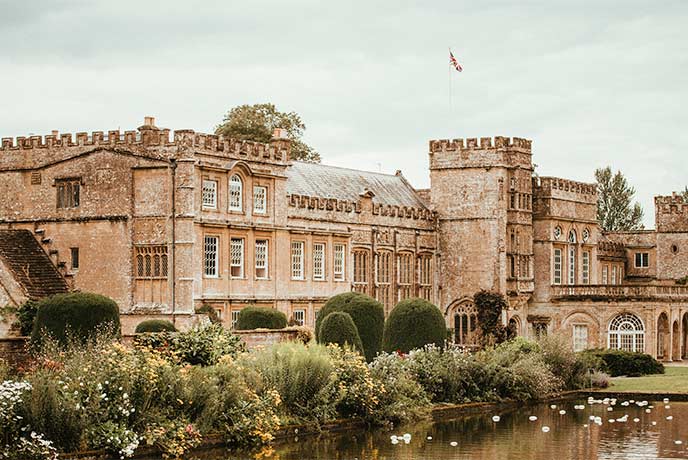
This stunning house and award-winning garden lies right on the border with Dorset, but is tucked enough into the county near Chard to belong to Somerset. Forde Abbey has over 30 acres of gardens to explore that have been developed for over 900 years, and is a must for the botanically-minded.
With a bog garden, arboretum, rock garden, kitchen garden and park garden to wander around, there’s plenty to inspire. Flowers bloom throughout the seasons, from spring bulbs to sweet peas and rustling grasses to frost-edged hellebores. Inside the impressive house, you can find evidence of its previous incarnation as a monastery, with the 12the century Cistercian monk’s quarters, kitchen, cloisters, refectories and chapter house beautifully preserved, while the state rooms and saloon were formed during later periods and reflect the wealth of its owners. Blessed with fantastic furniture and artwork, the Mortlake tapestries, which lie in the Saloon, are based on the works of Raphael and are the most important works of art in the abbey.
After visiting the house and gardens, pop into the coffee shop for refreshments before perusing the gift shop and plant nursery. Kids will love letting off steam in the willow labyrinth and letterbox trail. Forde Abbey is also host to a range of seasonal events, such as Snowdrop Weekends in February, Crocus Week in March, Tulip Extravaganza mid-April to mid-May, and Spectacular Sweet Peas in July.
Feeling inspired? Take a peek at our beautiful holiday cottages in Somerset and start planning your action-packed getaway today.


